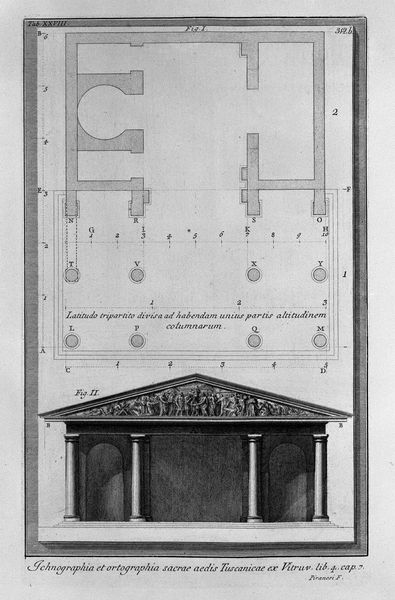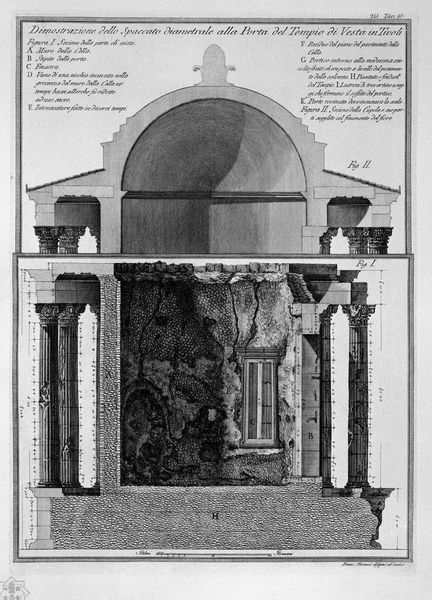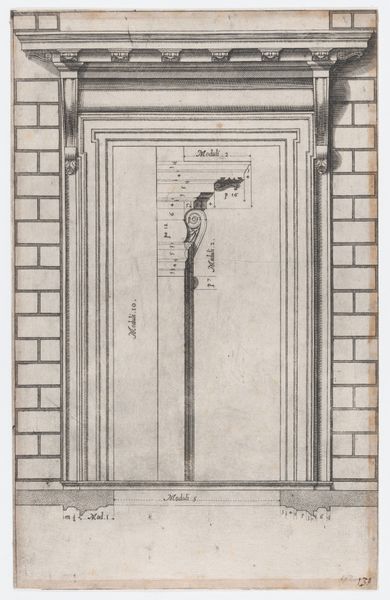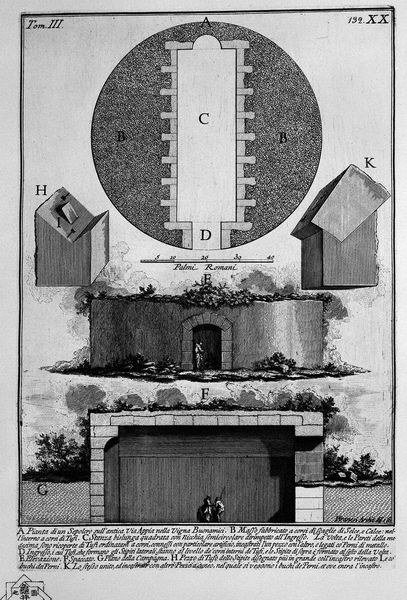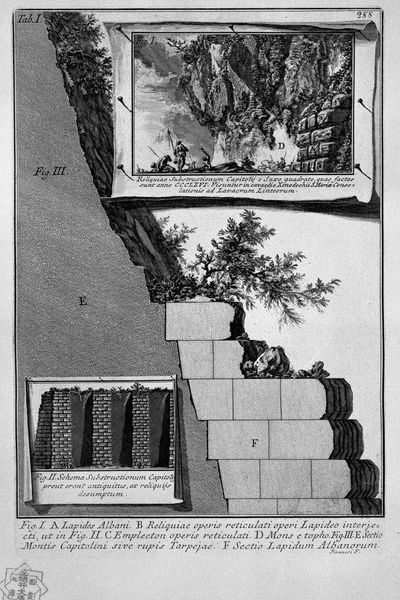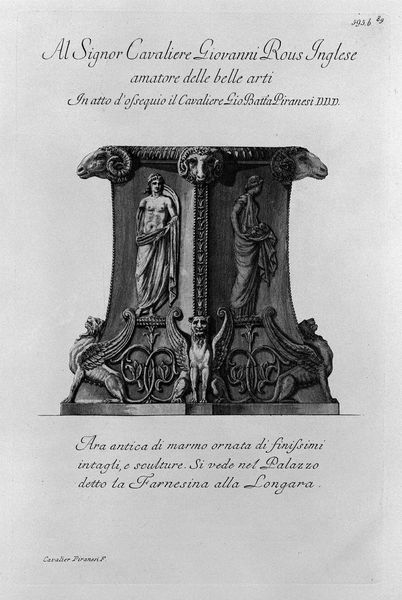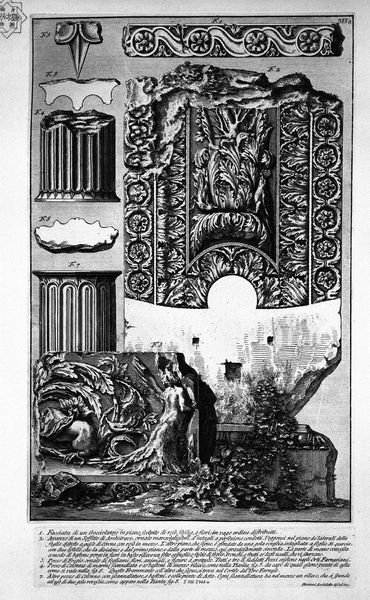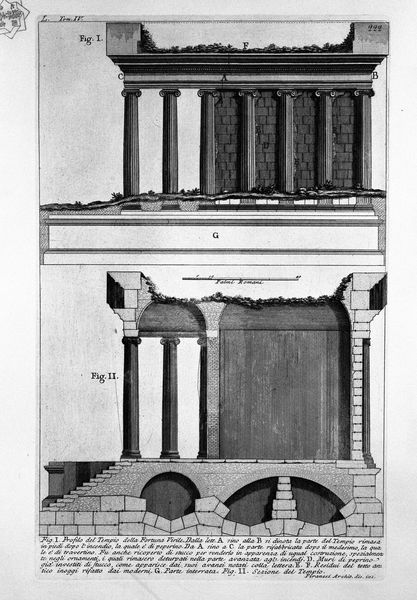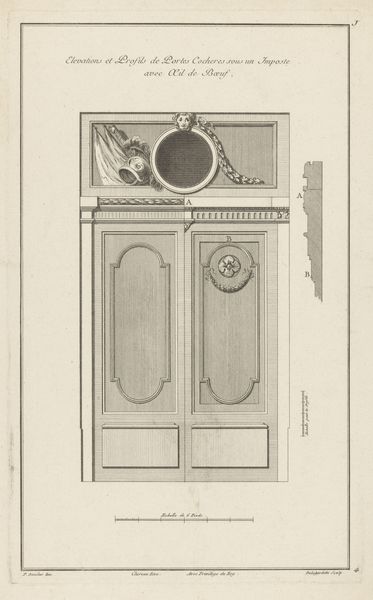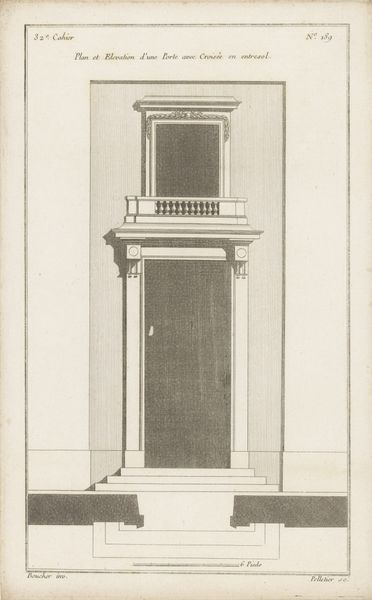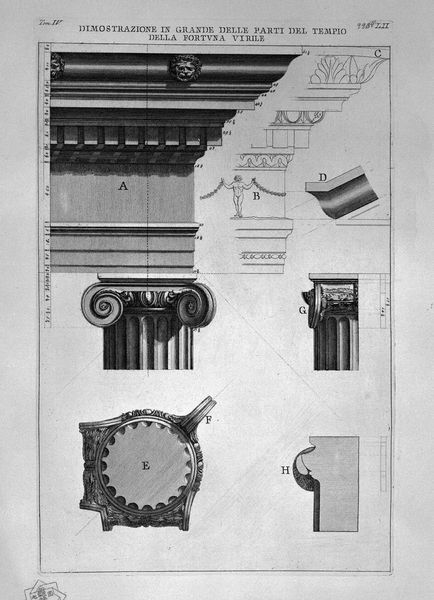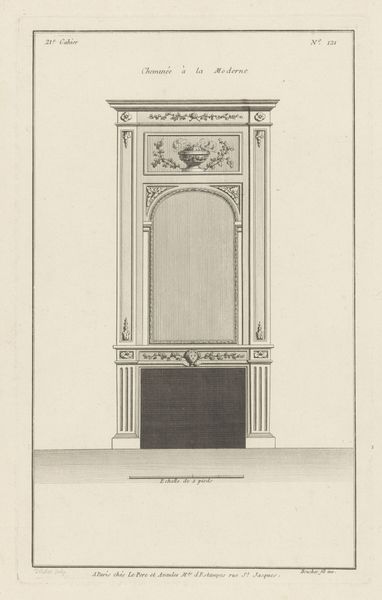
print, engraving, architecture
# print
#
old engraving style
#
landscape
#
romanesque
#
ancient-mediterranean
#
line
#
engraving
#
architecture
#
realism
Copyright: Public domain
Curator: Let's turn our attention to this print, "Ruins of the Temple de` Beavers in the town of Cora" by Giovanni Battista Piranesi. It showcases his signature style of architectural renderings. What are your initial thoughts? Editor: It has such a striking, almost melancholy presence. The stark contrast of the engraving emphasizes the ruin, but also somehow elevates it. It speaks to a lost grandeur, and perhaps also raises a question of ownership - the dedication to Antonio Corbi seems like an important clue. Curator: Exactly! Piranesi, of course, wasn't an archaeologist, but rather an artist deeply fascinated by the grandeur of Roman antiquity and how it had been transformed, and even repurposed over time. Editor: So he presents it as not just an architectural study, but a document of social history as well. The dedication to Antonio Corbi raises questions about patronage, privilege, and the relationship between artists and the elite during this time. Who was this man, and how did he figure into the life of Cora? Curator: It is through figures like Corbi, perhaps local landowners and aristocracy, that these buildings continue their societal relevance. But if we consider the role of an artwork, particularly a print, in distributing the vision of Roman society, its power as propaganda becomes more apparent. How is Piranesi making a statement on the present as well as the past? Editor: Definitely. And it invites the audience, then as now, to reflect on how power manifests and decays over time. This ruin, presented with such detail and artistry, becomes more than just stone, but an active commentary on cultural memory, how society decides which monuments should outlive their time, and why. Curator: The question of permanence in artistic interpretation continues. With Piranesi’s networks of influence throughout Europe, "Ruins of the Temple" invites audiences to explore new aesthetic sensibilities toward buildings. And indeed it opens doors to considering what society should prioritize. Editor: Ultimately, this image prompts a powerful exploration into the stories etched into structures like these and how it shapes our relationship to our shared history, both beautiful and complex.
Comments
No comments
Be the first to comment and join the conversation on the ultimate creative platform.
